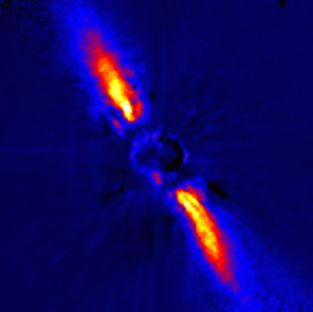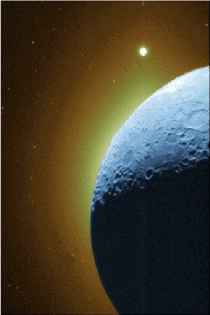|
Debris Disk Radiative Transfer Simulator Introduction |
  |
|
Welcome to the DDS - The Debris
Disk Radiative
Transfer Simulator!
The DDS is a web-based, continuum
radiative
transfer code for the simulation of Spectral Energy Distributions of
optically
thin dust configurations.
The DDS was developed in order to provide a simulation tool for the theoretical investigation and data analysis of Debris-Disks - late-stage, optically thin circumstellar disks. For this, a high-flexibility on the model setup, defined by the density distribution, chemically different dust components, grain size distributions and stellar heating sources is required. The range of applications of the DDS, however, extends far beyond pure Debris-Disk models. The continuum spectral energy distribution of any optically thin dust configuration illuminated by a point-like heating source, such as reflection nebulae or extended dust shells around old stars can be investigated. Arbitrary - 1D, 2D, and 3D - dust configurations can be considered by uploading density distributions resulting from external simulations (e.g., n-particle or hydrodynamic simulations) or analytical approaches. |
|
[ Detailed
Documentation: Wolf & Hillenbrand (2005), Comp. Phys. Comm., 171, 208 (see here)]
|
|
|
|
Pictures above:
beta Pic Debris Disk (ESO Press Photo
16/97), Zodiacal light from
the Solar System Interplanetary Dust (Star-tracker
camera on Clementine mission, NASA, 1994)
|